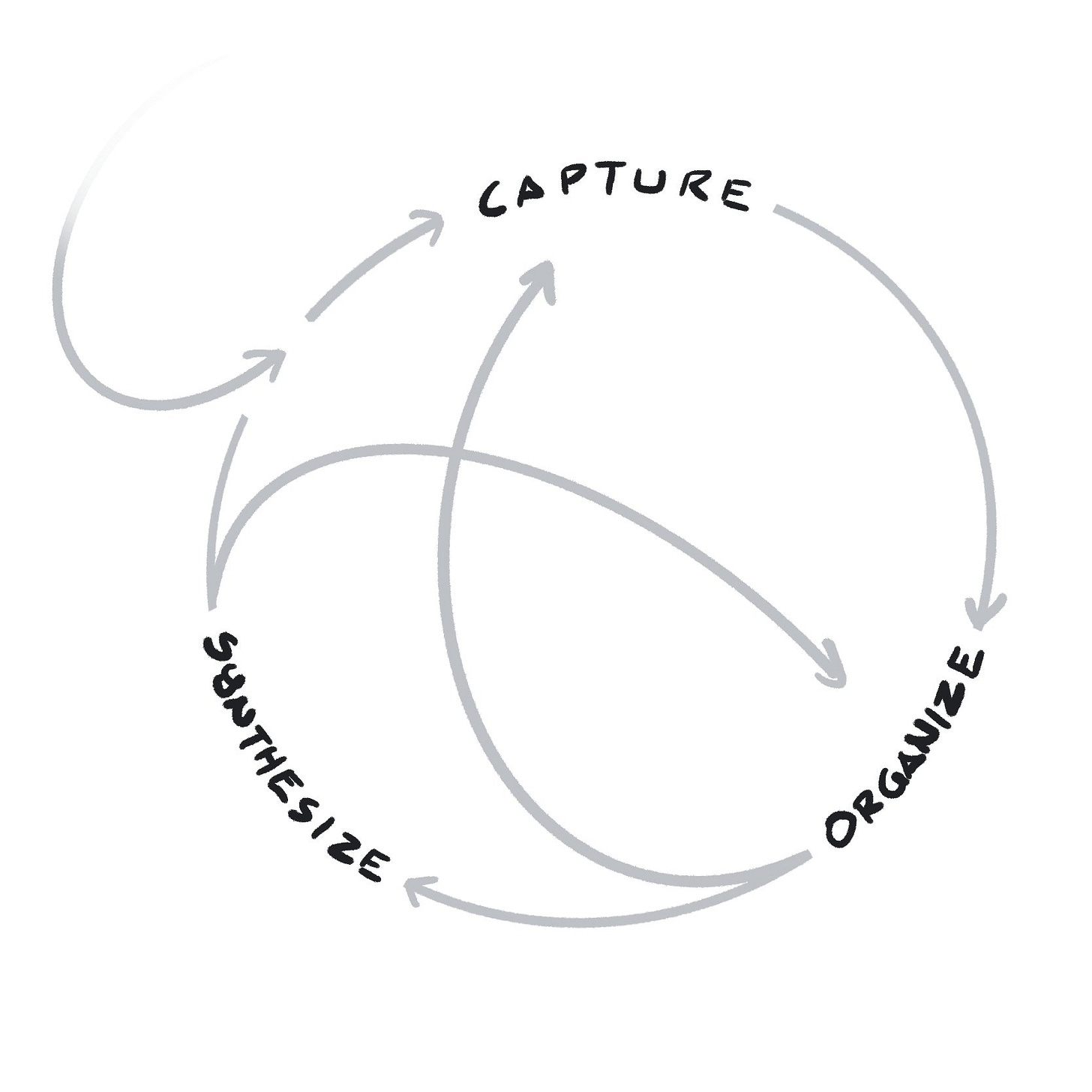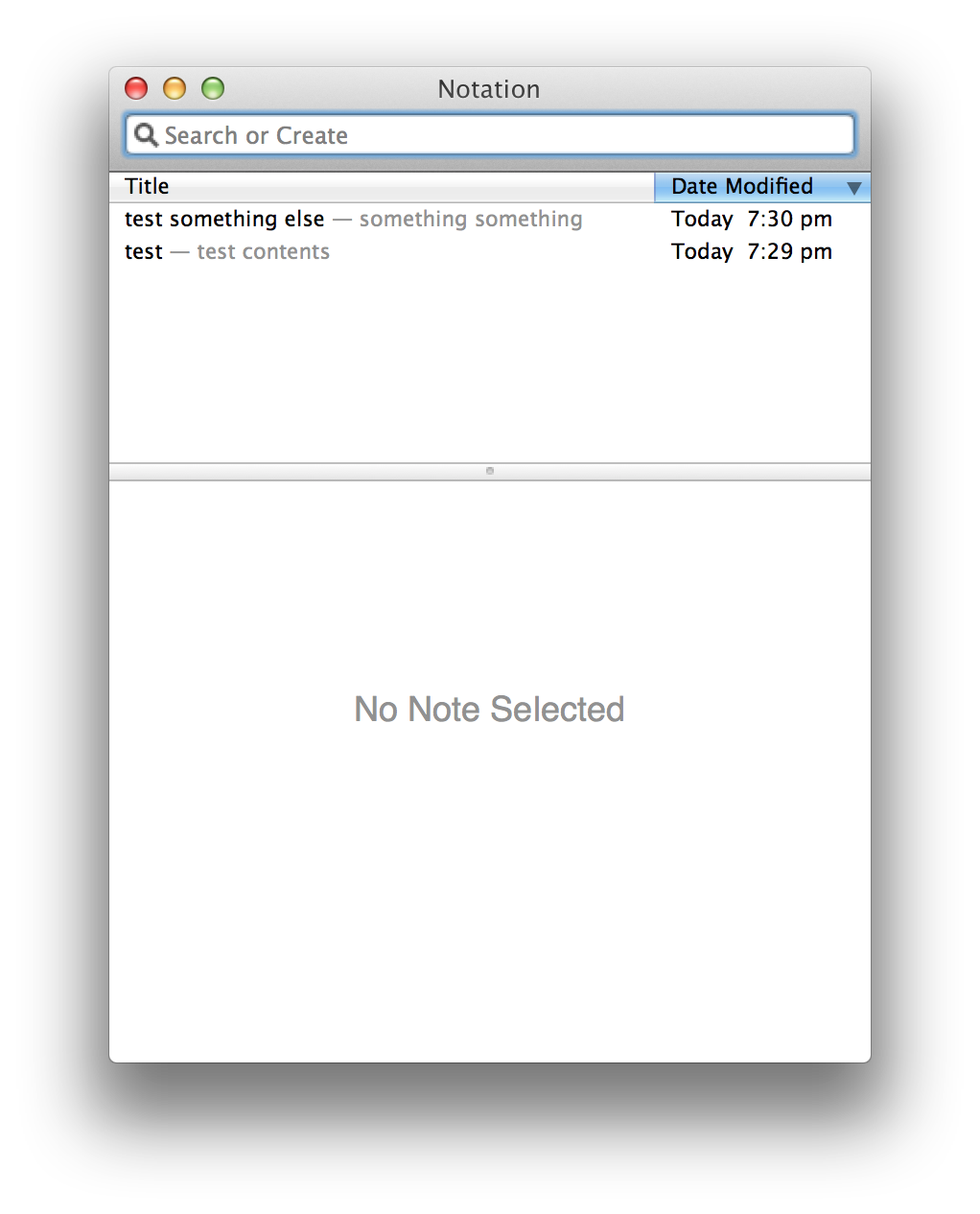Knowledge gardening is recursive
One my core design goals for Subconscious is to grow ideas from the bottom-up. From Unconscious R&D:
If we carefully closed the right feedback loops, could we construct a creative flywheel that generates finished works almost by accident, through a stream-of-consciousness process?
I think of this kind of process as knowledge gardening. You collect and plant idea seeds, returning periodically to water and weed. After many days, you find they have grown into a rough outline, a hypothesis, or even a complete work while you were away.
Knowledge gardening is one kind of system for generating self-organizing ideas. As a kind of self-organizing system, it can’t happen without some kind of feedback loop.

Here’s the thing: the feedback loops of most note-taking apps are broken, or non-existent.
What broken feedback loops feel like
Do you ever get the feeling you’re throwing your notes into the void? You jot an idea down. Before long, it gets lost in the shuffle. You forget it was ever there. Does a note for this already exist? Maybe you’ve taken this note before, and countless times before. You search for your notes on a topic. Most of them are scratch notes—rough, incomplete, touched once, then forgotten.
This is what broken feedback loops feel like. Everything is feed-forward. There are no opportunities in the interface to stumble back over your notes, to recurse back over them. You’re continually adding energy to the system, but none of it is returning back.
Knowledge gardening, on the other hand, is the emergent result of constructing a feedback system. I recurse over scratch notes, revise them, add to them, refactor them, and combine them with other ideas to form new ideas. Over time, these little recursive acts of watering and weeding accumulate. Useful knowledge grows from the ground-up.
We can use this lens of feedback systems to analyze note taking systems, and gain a better understanding of their game mechanics.
Zettelkasten as a feedback system
Zettelkasten is an old and surprisingly effective paper system for idea gardening. I’m going to breeze over the details, but if you want in-depth look at how it works, check out How to Take Smart Notes.
It’s an index-card-based system, and that means you have to do a lot of manual note-card filing. All that filing can be quite a bit of work, but Zettelkasten leans into this limitation to construct a feedback loop.
The core game mechanic of Zettelkasten is to file your note some place where you would want to stumble over it again. As you rifle through old notes to find this place, you recurse over notes you had forgotten about, sparking new ideas, which you then write down, and have to file, causing you to rifle through again, sparking more ideas… in a cascade of idea generation. Zettelkasten is a feedback system.
Notational Velocity as a feedback system
Notational Velocity was a tiny note-taking tool built around a single idea: search or create.
The only way to create a new note in Notational Velocity was through the search bar. Typing would live-searched through your notes. Hitting enter would create a new note, with the contents of the search query as the title for the note.
Like Zettelkasten’s game mechanic, this search-or-create mechanic closes a feedback loop. Every time you enter a new idea, you’re recursing over old ideas. Often you find yourself editing, or refactoring an old note, instead of creating a new note. Over time, these microinteractions add up, generating knowledge from the bottom-up.
Close a loop, make a flywheel
Most apps fixate on features. Subconscious is more interested in helping you garden feedback loops.
Gardening feedback loops is tricky. They are invisible, unless you know how to look for them. They’re spread over time, not space. Microscopic interactions can generate outsized effects. Yet, by learning to see, make, and break feedback loops, we can garden our own cybernetic systems, and generate agency.







